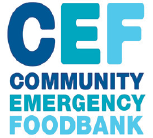Jane’s Walk 2025 – Day 12
Margaret has joined us again for the first part of the walk. We start off along the Great Stour, where there are a number of smaller river boats moored. On the bank of each of these moorings, the boat owners have built platforms with small huts and sitting areas. Rather charming.
Soon we leave the Great Stour along with St Augustine’s Way. St Augustine of Hippo was sent from Rome to England in the 6th century to bring Christianity to the Britons and became the 1st Archbishop of Canterbury. After about 3/4s mile, we reach the Little Stour river. Here, the Augustine Way crosses over and heads towards Canterbury, and we turn the opposite way along the banks of the river. We wonder a bit if we are on the right side of the river, as it is not clear on my Google map, and it is better to walk where we are.
Farmers are busy harrowing their fields along here before sowing their winter crops. I am intrigued that one of these fields has been deep ploughed, an unusual sight nowadays. We pass a field that appears to be a mixture of wild flowers, including sunflowers, flax, and salvias all going to seed. Margaret and I conclude that this could be being harvested for bird seed, a thriving business nowadays.
Further along a metal pipe is straddling the river and on it are sitting 2 large black birds with pale coloured breasts and long beaks. They remind me of cormorants, which are usually black, the way they are sitting with the wind behind them as if they are drying themselves, but cormorants usually do this with their wings outstretched. They are totally unperturbed by us as we pass close by, even when Moses barks. We later identify them as cormorants that apparently have paler coloured fronts during the breeding season.
We cross over the river at a wooden farm bridge and walk along an attractive track beside very tall, closely planted poplars protecting the orchard behind. We reach Flucks Gutter where the Little Stour meets the Great Stour and from now on is known as the Stour river. We say goodbye to our walking friends after a welcome coffee provided by them and continue along the river.
This is a 6 mile stretch with no access by road so Tom and I take our picnic with us. The forecast is not good! We start off reasonably well although the path is rutty and hard to walk on having been used by farm vehicles. We pass a woman on a quad bike tending her large flock of sheep. Further on we meet a large herd of brown cows and their calves. Inevitably they are standing on the path we are going down watching us or rather more accurately, Moses. Much to Tom’s consternation I let Moses off the lead, knowing that a dog can run faster than we can if they decide to charge him. One cow is particularly inquisitive but by walking quietly through them and Moses barking furiously from a distance they give up before we get to the gate.
Sure enough the rain clouds are gathering behind us so we decide to have our picnic and put on our waterproof trousers ready for the rain which arrives just as we finished preparing for the worst. Luckily the wind is behind us and we had some protection from our backpacks. After the first downpour we have a bit of a respite before there is another cloudburst, this time even more violent and even Moses is diving for cover under the bushes. Luckily this time it is over quickly and the sun reappears!
The downside now is the rough track we were following is a sea of mud and incredibly slippy. We are grateful for our 2 sticks as walking would have been impossible without them. We walk under the mainline railway bridge and pass a large industrial area on the opposite side of the river. The footpath is obviously little used on this stretch, with the lush grass very long and Tom thinks it is like wading through spaghetti! I rather agree.
We are getting tired and our speed has decreased considerably. Luckily Richard appears from the other direction and he encourages us that we have only three quarters of a mile to go, across the railway line again and up a steep bank to Castle Richborough. This was an important Roman fort during their invasion of Britain in AD43.

